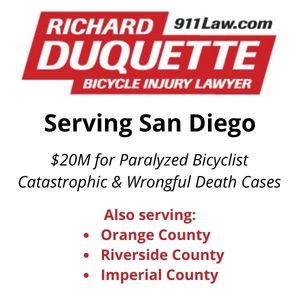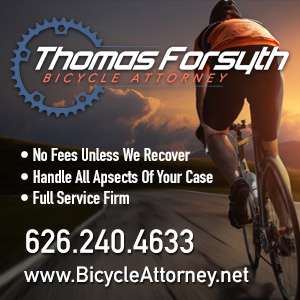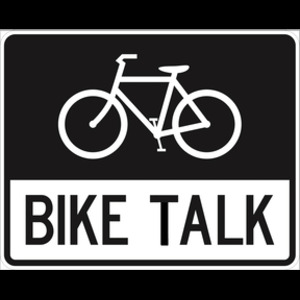Add another name to SoCal’s climbing bike body count.
It made the news all over town when 18-year old Inglewood High School star athlete Markeis Vonreece Parish was killed in a hit-and-run while crossing the street at Crenshaw and 78th Place last month.
What I missed at the time, or the stories I read failed to mention, was that he was walking his bike in an unmarked crosswalk when he was hit by a speeding Mercedes with enough force to send his body sliding a full block to 79th Street, and stripping him of his clothes as he skidded across the pavement.
And even though he was identified as a pedestrian at the time, that makes him more than just another notch in the seemingly endless epidemic of hit-and-runs plaguing Los Angeles and other Southern California cities.
It makes him one of us.
And I apologize for the delay in acknowledging that.
The collision occurred at 6:15 pm on Saturday, July 20th; the car was found less than an hour later, roughly two miles away at Imperial Highway and Spinning Avenue. To the best of my knowledge, no arrest has been made, despite reports that the identity of the driver is common knowledge within the community.
This is the 55th bike-related fatality in Southern California this year, and the 24th in Los Angeles County; that compares to 23 in LA County for all of last year.
It’s also the 9th bicycling death in the City of Los Angeles, compared to five in each of the previous two years. And it’s the 13th fatal hit-and-run involving a bike rider in Southern California since the first of the year; eight of those have occurred in LA County — seven in the City of LA.
My sympathy and prayers for Markeis Parish and all his family and loved ones.
………
Bike Talk airs every Saturday at 10 am; listen to it live or download the podcast from KPFK.
Bike Long Beach hosts Bike Saturdays every weekend; ride your bike to participating local shops and business throughout the city to get special offers and discounts.
CD4 Council Member Tom LaBonge hosts his annual Tour LaBonge each Wednesday through August 17th.
Metro continues to offer a series of free bike safety classes throughout the LA area, including classes this weekend in Downey, Hacienda Heights and Culver City, as well as a Spanish language class Monday in Azusa.
There will be a memorial ride for San Diego cycling legend Gordie Shields today at 9 am, starting at Pepper Park, 3299 Tidelands Ave in National City.
The next edition of the LACBC’s Sunday Funday Rides takes place this Sunday, August 4th, with a Lakewood Family ride led by board member Steve Boyd. The easy ride along the San Gabriel River Bike Path offers options of six and 18 miles, returning along PCH. The ride is free for LACBC members and a guest; meet at Del Valle Park, 5939 Henrilee Street at 9:30 am, rolling at 12:30 pm.
The best of California bike racing comes to LA on Sunday, August 4th when the Brentwood Grand Prix rolls through the streets of the Westside with the SCNCA Elite State Criterium Championships. The racing starts at 7 am and continues through the Women’s Cat 1 – 3 and Men’s Cat 1 – 2 at 2:15 pm and 3:15 pm, respectively. And you won’t want to miss the kid’s races at 12:45 pm.
The Los Angeles Bicycle Advisory Committee meets at 7 pm on the first Tuesday of each even-numbered month; the next meeting is scheduled for Tuesday, August 6th at the Hollywood Neighborhood City Hall Community Room, 6501 Fountain Ave.
The USA Cycling Elite Track National Championships returns to the bike-unfriendly StubHub Center in Carson next weekend, with events starting Friday, August 9th and continuing through Sunday the 11th.
Downtown Long Beach will host its inaugural Bike Drive-In starting at 6 pm on Saturday, August 10th in the parking lot across from Fingerprints Music at the intersection of Fourth and Elm streets. The evening will feature live music from three bands, followed by the bike-centric animated feature, The Triplets of Belleville.
The Planning Committee of the Los Angeles County Bicycle Coalition hosts a panel discussion on What Do Elected Officials Want to Hear on Thursday, August 22nd at 7 pm in the Edison Room on the 1st Floor of LACBC Headquarters, 634 S. Spring Street. Free for LACBC members, $10 for non-members.
The second annual Clitoral Mass — yes, you read that right — women’s ride rolls on Saturday, August 24th from 4 pm to midnight. Riders assemble at Watts Towers, 1765 E. 107th Street.
The Los Angeles County Bicycle Coalition’s Civic Engagement Committee meets at 6:45 pm on the last Tuesday of each month to discuss how to elect and influence bike-friendly politicians. The next meeting will take place on Tuesday, August 27th, site TBD. The meetings are open to everyone, and you don’t have to be an LACBC member to participate; email bikinginla at hotmail dot com to be added to the discussion list.
Here’s your chance to bike the famed Las Vegas strip and the surrounding Las Vegas Valley, with the 6th Annual RTC Viva Bike Vegas Gran Fondo Pinarello on Saturday, September 21st. The event will offer routes for riders of all levels, from a 17-mile ride to 60-mile Metric Century and a 103-mile Gran Fondo; the longer rides will visit the Red Rock Canyon National Conservation Area and Lake Mead.
Bike SGV invites you to join them for their 2013 Awards Ceremony and Fundraiser on Saturday, September 28th from 5 pm to 11 pm at the San Gabriel Mission Grapevine Arbor, 320 South Mission Drive in San Gabriel.
CicLAvia returns to an expanded version of the original Heart of LA route on Sunday, October 6th.
Like this:
Like Loading...





